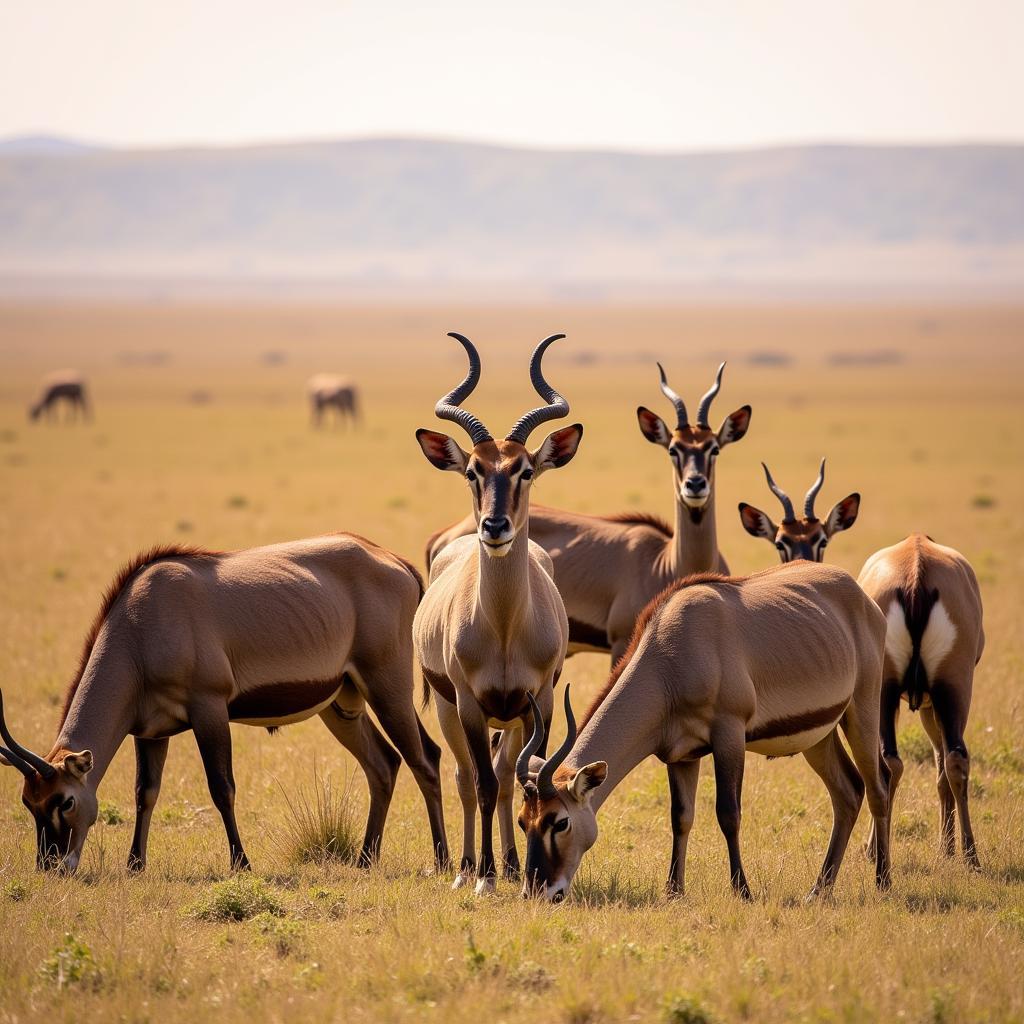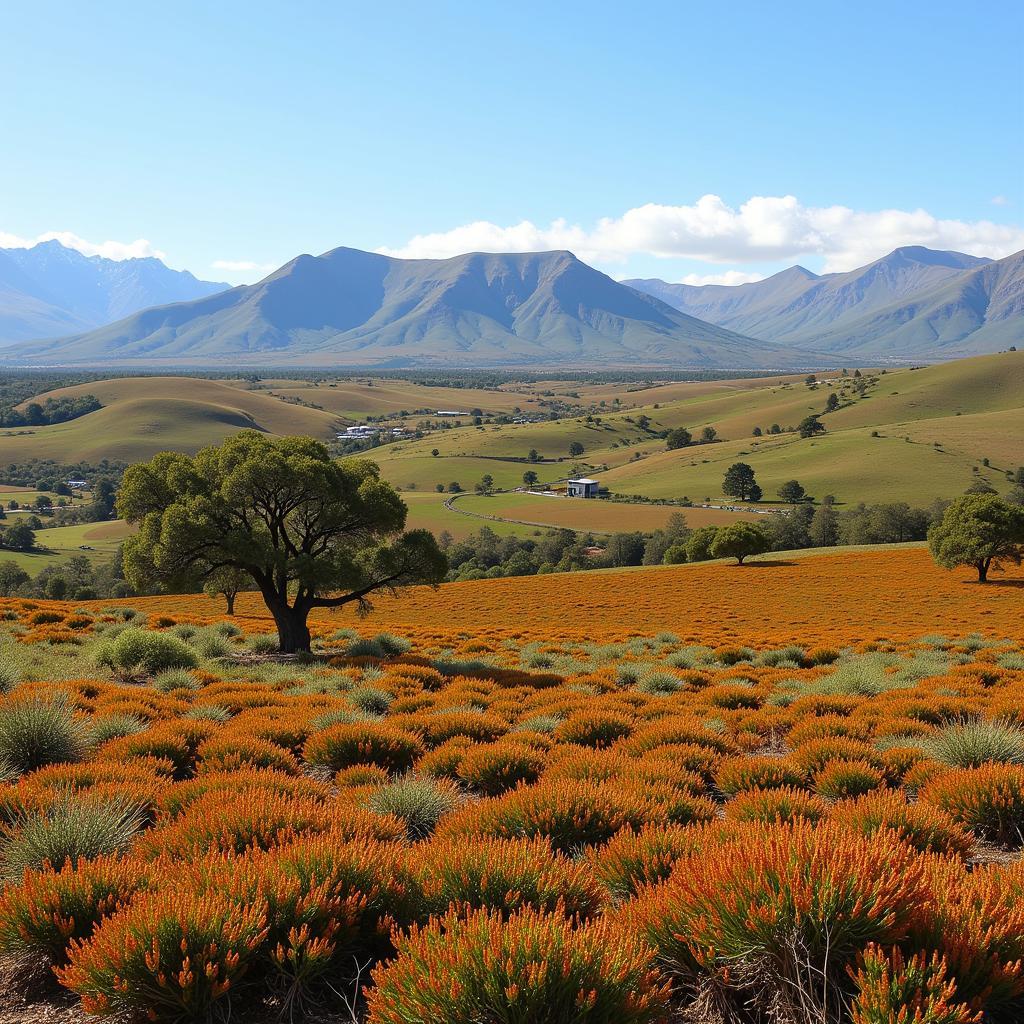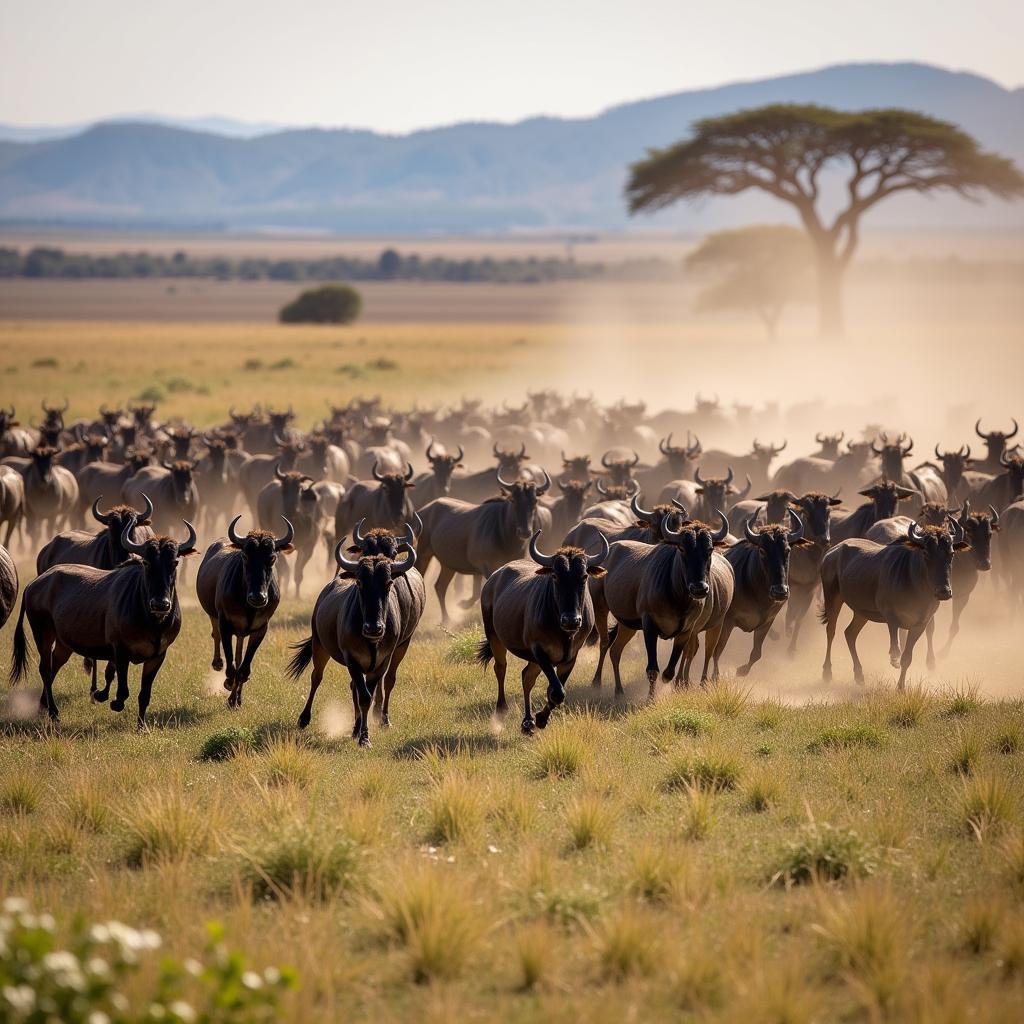Unveiling the Giants: African Forest Elephant Life in the Congo Basin
The African forest elephant, a denizen of the dense rainforests of the Congo Basin, stands as a testament to nature’s majesty. Often overshadowed by their savanna counterparts, these elusive giants play a critical role in the delicate balance of the rainforest ecosystem.
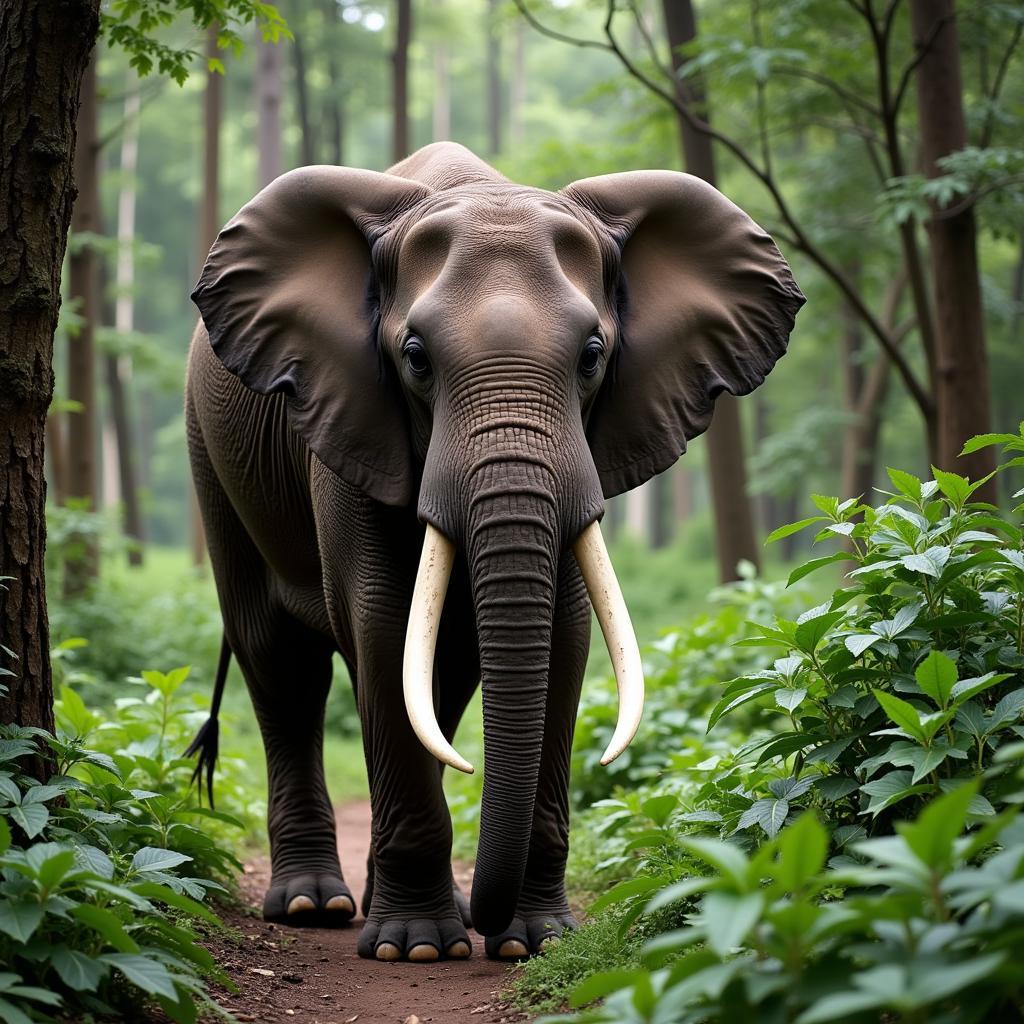 African Forest Elephant in Congo Rainforest
African Forest Elephant in Congo Rainforest
A Forest Elephant’s Tale: Size, Diet, and Habitat
Smaller than their savanna cousins, African forest elephants typically reach heights of 8 feet, making them well-suited for navigating the dense undergrowth. Their straight, downward-pointing tusks, unlike the curved tusks of savanna elephants, serve as tools for foraging, clearing paths, and digging for minerals.
These gentle giants are herbivores with a varied palate, consuming over 100 different plant species. Their diet consists of fruits, leaves, bark, and even soil rich in minerals. This diverse diet makes them vital seed dispersers, contributing significantly to the health and biodiversity of the rainforest.
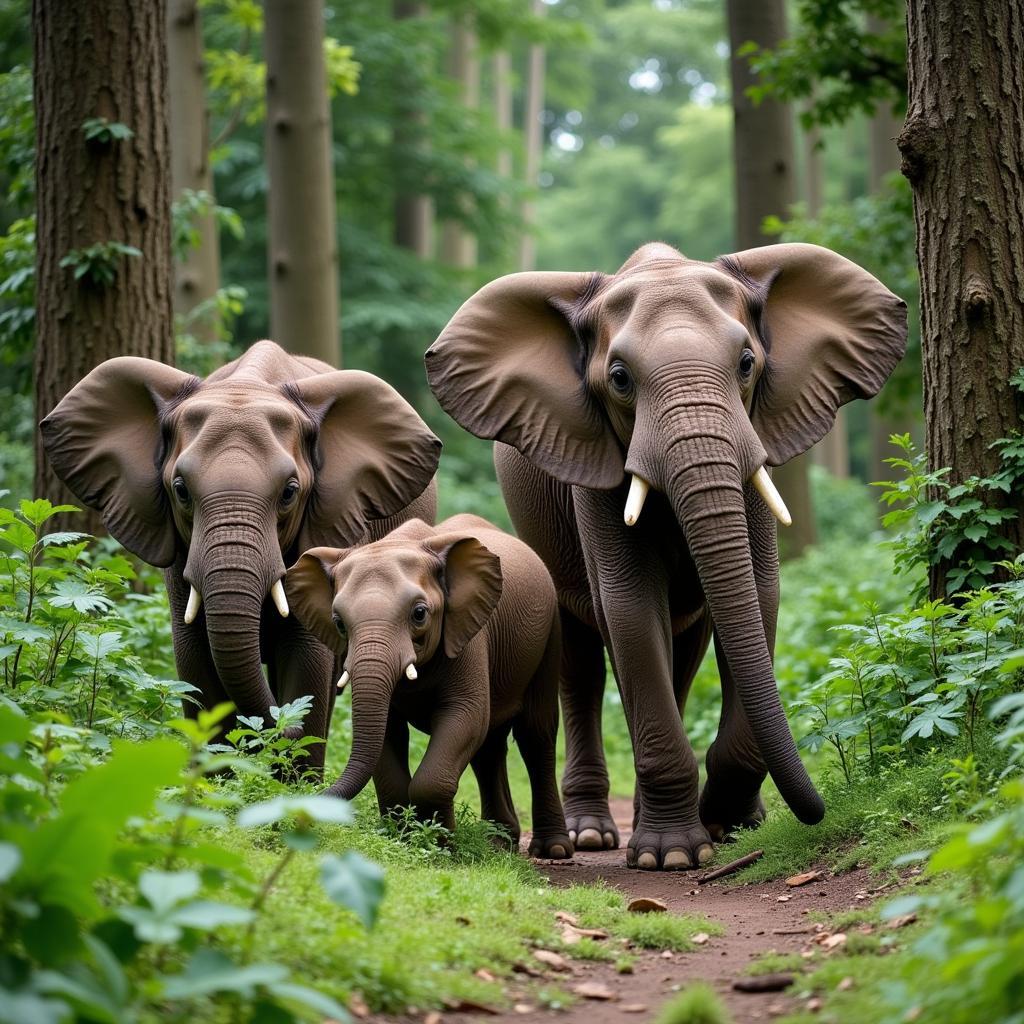 African Forest Elephant Family Group
African Forest Elephant Family Group
The Congo Basin: A Vital Stronghold for African Forest Elephants
The Congo Basin, spanning six countries in Central Africa, is home to the largest remaining population of African forest elephants. This vast expanse of rainforest provides the ideal habitat for these elusive giants, offering both sustenance and refuge.
However, this vital ecosystem faces numerous threats. Deforestation, driven by logging, mining, and agricultural expansion, fragments their habitat, isolating populations and disrupting their movement patterns.
Poaching: A Grave Threat to African Forest Elephant Survival
Poaching for ivory remains one of the most significant threats to the survival of African forest elephants. Their ivory, denser and more sought-after than that of savanna elephants, fetches a high price on the black market, fueling the illegal wildlife trade.
Despite international efforts to combat poaching, the demand for ivory continues to threaten these magnificent creatures. The loss of even a single elephant has a ripple effect on the entire ecosystem, impacting forest regeneration and biodiversity.
Conservation Efforts: Securing a Future for Forest Elephants
Protecting African forest elephants and their habitat is crucial for the ecological integrity of the Congo Basin. Conservation efforts focus on:
- Anti-poaching patrols: Strengthening law enforcement and increasing ranger presence in elephant habitats to deter and apprehend poachers.
- Community-based conservation: Engaging local communities in conservation efforts, empowering them to protect their natural heritage and benefit from sustainable livelihoods.
- Habitat protection: Establishing protected areas and promoting sustainable land-use practices to safeguard elephant habitats from deforestation and degradation.
The Future of African Forest Elephants: A Collective Responsibility
The plight of the African forest elephant is a stark reminder of the interconnectedness of all living things. Their survival depends on our collective action to address the threats they face and protect the fragile rainforest ecosystem they call home.
By supporting conservation organizations, advocating for stricter anti-poaching measures, and making conscious choices to reduce our impact on the environment, we can all contribute to securing a future for these magnificent giants of the forest.
Frequently Asked Questions About African Forest Elephants
1. What is the difference between an African forest elephant and an African savanna elephant?
African forest elephants are smaller than their savanna counterparts, with straighter tusks and rounded ears. They are also more ecologically specialized, relying heavily on the rainforest ecosystem. You can learn more about African elephants on the African elephant encyclopedia.
2. Why are African forest elephants important to the rainforest ecosystem?
African forest elephants play a vital role in seed dispersal, nutrient cycling, and maintaining forest structure. Their loss would have cascading effects on the entire ecosystem. Discover more about the African continent nature.
3. How can I help protect African forest elephants?
You can support conservation organizations working to protect African forest elephants, reduce your consumption of products that contribute to deforestation, and spread awareness about the importance of elephant conservation. For captivating visuals of the African forest, check out this African forest live video.
4. Where can I find more information about African forest elephants?
Reputable conservation organizations, scientific journals, and educational websites are excellent resources for reliable information about African forest elephants. If you’re looking for creative inspiration, explore these African drawing ideas.
5. What is the current population status of African forest elephants?
African forest elephants are classified as Critically Endangered by the International Union for Conservation of Nature (IUCN), with their populations facing a significant decline due to poaching and habitat loss.
For more comprehensive information, please explore this link: African forest xnxx.
We encourage you to delve deeper into the fascinating world of African forest elephants and join us in the effort to protect these magnificent creatures for generations to come. Remember, the future of these gentle giants rests in our hands.
Need assistance or have questions? Don’t hesitate to reach out!
Phone: +255768904061
Email: kaka.mag@gmail.com
Address: Mbarali DC Mawindi, Kangaga, Tanzania
Our dedicated customer support team is available 24/7 to assist you.


